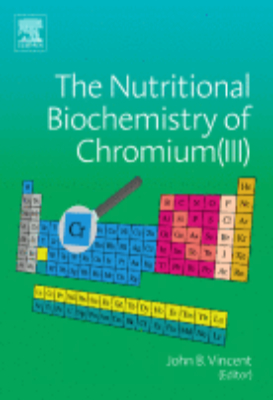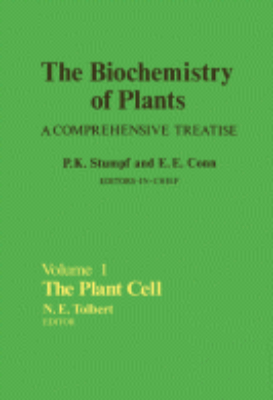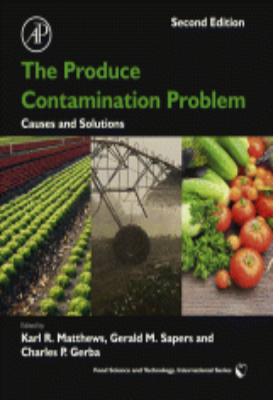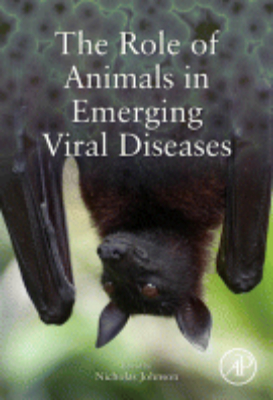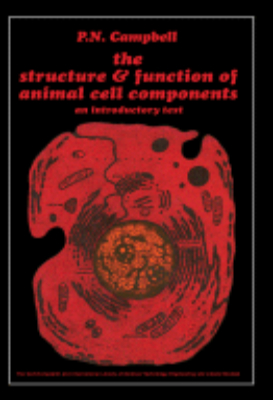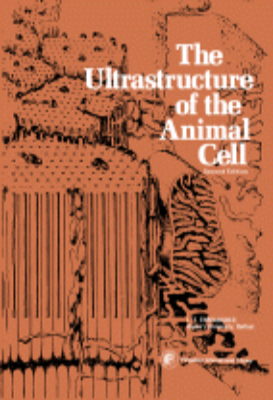E-Resources
The Laboratory Fish
This reference series provides researchers of all kinds with comprehensive practical information on different species of laboratory animals, for daily laboratory use. Each title in the series in devoted to a different species. and draws together all available data in one easily accessible source. Each has similar format, with sections on the strains available, their husbandry and special diets. This leads to sections on gross anatomy, endocrinology and reproduction, followed by more detailed sections on neuroanatomy, vasculature, cell biology and histology of particular organs and structures, and a section on molecular biology. High quality illustrations are included throughout, with copious color histology microphotographs. Key Features @introbul:Key Features@bul:* Comprehensive reference source for anybody working with laboratory fish* 2-color, user-friendly format* Copious high quality illustrations included throughout* Color plate section* Glossary* Appendix of useful addresses
The Laboratory Mouse
Among animals used in research, teaching and testing, mice are now widely recognized as the most important model for human diseases and disorders. They comprise the majority of all experimental mammals and tend to be the model of choice used for research into many diseases/disorders including cancer, heart disease, asthma, Alzheimers, Down syndrome, deafness, osteoporosis, obesity, diabetes and even mental health research. Additionally the laboratory mouse continues to play a widely publicized vital role in the human genome project.One of the most time-consuming activities in research laboratories is looking up information specific to the species or strain of animal being used. This book, part of the highly successful Handbook of Experimental Animals series, allows the user quick access to any point of interest on the mouse as an experimental model.
The Laboratory Primate
A volume in the Handbook of Experimental Animals series, The Laboratory Primate details the past and present use of primates in biomedical research, and the husbandry, nutritional requirements, behaviour, and breeding of each of the commonly used species. Practical information on regulatory requirements, not available in other texts, is covered. Sections on experimental models cover the major areas of biomedical research, including AIDS, cancer, neurobiology and gene therapy. Assisted reproductive technology, tissue typing, and minimum group sizes for infectious disease/vaccine studies are also included.
The Laboratory Rat
This reference series will provide all researchers using laboratory animals with comprehensive practical information on the various species. Each title in the series is devoted to a particular species, and draws together all available data in a "one-stop", easily accessible source. Each has similar format, with sections on the strains available, their husbandry, and special diets. Also included are sections on gross anatomy, endocrinology, and reproduction, followed by more detailed sections on neuroanatomy, vasculature, cell biology, and histology of particular organs and structures, and a section on molecular biology. High quality illustrations are included throughout and a color plate section is provided. A glossary, list of equipment suppliers, and "Quick Reference Section" are added features. The "Quick Reference Section" brings together all tables from the text, allowing readers to find data swiftly. The first volume in The Handbook of Experimental Animals Series, The Laboratory Rat, provides researchers in academia and industry using laboratory animals with comprehensive, practical information on the species. The Laboratory Rat has been divided into eight sections dealing with:* Strains and their selection for research* Housing and maintenance* Pathogens and diseases* Breeding and reproduction* Anatomy* Physiology* Procedures, including experimental surgery* Emerging techniques, including genetic engineering and molecular technology
The Laboratory Rat: Second Edition 2006
The Laboratory Rat, Second Edition features updated information on a variety of topics including: rat genetics and genomics, both spontaneous and induced disease; state-of-the-art technology for housing and husbandry; occupational health, and experimental models. A premier source of information on the laboratory rat that will be of interest to veterinary and medical students, senior graduate, graduate students, post-docs and researchers who utilize animals in biomedical research.
The Microbiological Quality of Food
"The Microbiological Quality of Food: Foodborne Spoilers specifically addresses the role of spoilers in food technology and how they affect the quality of food. Food spoilers represent a great challenge in food quality, determining the shelf-life of many products as they impact consumer acceptability of taste, texture, aroma, and other perceptions. Divided into four sections, the first section defines microbial spoilage of food, with special emphasis on methods for the evaluation of spoiling phenomena and the status of their regulatory framework, examining both existing regulations and possible gaps. The second section examines spoiling microorganisms, covering a range of common spoilage microorganisms, including pseudomonas, yeasts, and molds and spore formers, as well as less-common spoilers, including lactic acid bacteria and specific spoilage organisms in fish. The third section highlights spoiling phenomena within certain food types. Chapters cover dairy, fish, meat, and vegetables, and other products. The final section investigates emerging topics which point to future trends in the research of food spoilers. There is insight into microorganisms resistant to preservation, the role of biofilms in food quality, and the link between food safety and food spoilage, with a special emphasis on certain spoiling microorganisms which could be opportunistic pathogens. Written by an international team of leading authors, this book provides state-of-the-art coverage of this topic, which is essential to the shelf-life and quality of food. Key Features. Provides in-depth coverage of the different spoilers which cause the deterioration of foods, including less common spoilers not covered in other publications. Includes dedicated chapters covering the spoilage of specific products, making this book ideal for those working in the food industry. Presents a framework for future research in the area of foodborne spoilers"
The Molecular and Hormonal Basis of Plant-Growth Regulation
The Molecular and Hormonal Basis of Plant-Growth Regulation deals with the molecular and hormonal basis of plant-growth regulation. Topics covered range from molecular biology in plants to the structural units of DNA, DNA replication and RNA transcription, and the process of translation and protein synthesis. The use of RNA for transmission of genetic information is also discussed. This book is comprised of 16 chapters and begins with an overview of the foundations that form the basis of modern biology, followed by an analysis of DNA and its structural units. The role of enzymes in DNA replication is then examined, together with RNA transcription and protein synthesis. The next section focuses on modern aspects of hormone action and introduces the reader to the growth-regulatory hormones existing in most higher plants; the role of ribosomes in the polymerization of transfer RNA-borne amino acids; the structure and biophysical properties of the mitochondrion and the chloroplast as genetic units; and the use of antibiotics in the inhibition of synthesis of nucleic acids and proteins. This monograph will be a valuable resource for biologists, plant physiologists, teachers, and students who seek to widen their general knowledge about plant growth.
The New Genetics of Mental Illness
The New Genetics of Mental Illness is a collection of papers that discusses the advancement of molecular biology in the context of psychiatry. The book presents papers that are organized thematically. The text first discusses the basics of biology and quantitative models, and then proceeds to covering linkage analysis. Next, the book deals with various mental disorders, including schizophrenia, eating disorders, and developmental disorders. The remaining materials turn their attention to dementia and Huntingtons disease. The book will be of great use to researchers and practitioners of behavioral sciences, such as psychology and psychiatry.
The Nutritional Biochemistry of Chromium (III)
Chromium nutritional supplements are the second best selling mineral supplements after calcium as chromium is found in pills, sports drinks, chewing gums, smoothies, and numerous other products. Chromium has been promoted to promote weight loss and muscle development and most recently to be available to treat the symptoms of type 2 diabetes and related conditions. The aim of The Nutritional Biochemistry of Chromium(III) is to examine the four most controversial areas of chromium nutrition and biochemistry: - is chromium an essential element for humans and are chromium nutritional supplements of value - what biochemical role, if any, does chromium play in the body - can large doses of chromium(III) be used to treat symptoms of type 2 diabetes, cardiovascular disease, and related medical conditions - is the use of chromium(III) supplements a health concern. Scientific experts, who are recognized leaders in the field, weigh in with their opinions on both sides of these issues in this book.A background review of the field from 1955-1995 by Vincent opens the book and concludes with a summary by Dr. Forrest Nielsen, Center Director of the USDA's Grand Forks Human Nutrition Research Center concludes the book.
The Physiological Ecology of Woody Plants
"The efficient management of trees and other woody plants can be improved given an understanding of the physiological processes that control growth, the complex environmental factors that influence those processes, and our ability to regulate and maintain environmental conditions that facilitate growth. Key Features. Emphasizes genetic and environmental interactions that influence woody plant growth. Outlines responses of individual trees and tree communities to environmental stress. Explores cultural practices useful for efficient management of shade, forest, and fruit trees, woody vines, and shrubs"
The Plant Cell
The Biochemistry of Plants: A Comprehensive Treatise, Volume I: The Plant Cell serves as an introduction to the various parts of the cell and to the basic biochemistry carried out in the different subcellular components. The book discusses the parts of a cell and the biochemical processes, such as respiration involving the mitochondria, microbodies or cytosol, or photosynthesis in the chloroplasts. The text also describes the use of plant cell cultures in biochemistry; the primary cell walls of flowering plants; and the morphology, purification, chemical and enzymatic composition, and functions of the plasma membrane and the cytosol. The biochemistry of the developmental and genetic processes involved, the development of function, and the biochemistry and metabolism of the mature organelle are also considered. The book further tackles the biochemistry of the plant mitochondria, peroxisomes, glyoxysomes, endoplasmic reticulum, ribosomes, golgi apparatus, plant nucleus, protein bodies, plant vacuoles, and cyanobacteria (blue-green algae). Biochemists, chemists, biologists, botanists, plant pathologists, and students taking related courses will find the book useful.
The Plant Cell Wall
International Series of Monographs on Pure and Applied Biology: The Plant Cell Wall, Volume 2 is a four-chapter text that covers the botanical aspects of cell wall. This book specifically discusses the cell types and cell walls in vascular plants, as well as the classification and constitution of cell wall. This book deals first with the fractionation, biosynthesis, components, formation regulation, and breakdown of cell wall. These topics are followed by discussions on cell wall polysaccharides, lignin structures, cell wall changes during cell growth, and the analysis of the wall-lysing enzymes. Other chapters examine the types and chemical components of cell wall carbohydrates and the surface processes in lignin polymer formations. A study of the phylogenetic aspects of lignins and lignin synthesis is presented. A chapter is devoted to the classification and features of plant species. The remaining chapter focuses on the non-vascular plants, protista, and metazoa. The book can provide useful information to scientists, botanists, students, and researchers.
The Plant Seed
The Plant Seed: Development, Preservation, and Germination presents papers delivered on the symposium on plant seed, held at the University of Minnesota in 1978. The volume discusses the development, preservation, and germination of the plant seed. The topics of this compendium focus on various aspects of the plant seed. The first group of papers describes genetic, hormonal, and molecular events associated with seed development, with particular attention given to the molecular biology of storage protein formation; the second group of papers examines the physiological and genetic aspects of germplasm preservation. The final group of papers examines the molecular aspects of seed germination. The book will be of interest to botanists, biologists, plant breeders, plant physiologists, plant pathologists, and geneticists.
The Produce Contamination Problem: 2009
Understanding the causes and contributing factors leading to outbreaks of food-borne illness associated with contamination of fresh produce continues to be a worldwide challenge for everyone from the growers of fresh-cut produce through the entire production and delivery process. Additionally researchers both at universities and in government agencies are facing an increased challenge to develop means of preventing these foodborne illness occurrences. The premise of this book is that when human pathogen contamination of fresh produce occurs, it is extremely difficult to reduce pathogen levels sufficiently to assure microbiological safety with the currently available technologies. A wiser strategy would be to avoid crop production conditions that result in microbial contamination to start. These critical, problem-oriented chapters have been written by researchers active in the areas of food safety and microbial contamination during production, harvesting, packing and fresh-cut processing of horticultural crops, and were designed to provide methods of contamination avoidance. Coverage includes policy and practices in the US, Mexico and Central America, Europe, and Japan.
The Produce Contamination Problem: 2014
"Understanding the causes and contributing factors leading to outbreaks of food-borne illness associated with contamination of fresh produce is a worldwide challenge for everyone from the growers of fresh-cut produce through the entire production and delivery process. The premise of The Produce Contamination Problem is that when human pathogen contamination of fresh produce occurs, it is extremely difficult to reduce pathogen levels sufficiently to assure microbiological safety with the currently available technologies. A wiser strategy would be to avoid crop production conditions that result in microbial contamination to start. These critical, problem-oriented chapters have been written by researchers active in the areas of food safety and microbial contamination during production, harvesting, packing and fresh-cut processing of horticultural crops, and were designed to provide methods of contamination avoidance. Coverage includes policy and practices in the United States, Mexico and Central America, Europe, and Japan. Key Features. Addresses food-borne contaminations from a prevention view, providing proactive solutions to the problems. Covers core sources of contamination and methods for identifying those sources. Includes best practice and regulatory information"
The Role of Animals in Emerging Viral Diseases
"The Role of Animals in Emerging Viral Diseases presents what is currently known about the role of animals in the emergence or re-emergence of viruses including HIV-AIDS, SARS, Ebola, avian flu, swine flu, and rabies. It presents the structure, genome, and methods of transmission that influence emergence and considers non-viral factors that favor emergence, such as animal domestication, human demography, population growth, human behavior, and land-use changes. When viruses jump species, the result can be catastrophic, causing disease and death in humans and animals. These zoonotic outbreaks reflect several factors, including increased mobility of human populations, changes in demography and environmental changes due to globalization. The threat of new, emerging viruses and the fact that there are no vaccines for the most common zoonotic viruses drive research in the biology and ecology of zoonotic transmission. In this book, specialists in 11 emerging zoonotic viruses present detailed information on each virus's structure, molecular biology, current geographic distribution, and method of transmission. The book discusses the impact of virus emergence by considering the ratio of mortality, morbidity, and asymptomatic infection and assesses methods for predicting, monitoring, mitigating, and controlling viral disease emergence. Key Features. Analyzes the structure, molecular biology, current geographic distribution and methods of transmission of 10 viruses. Provides a clear perspective on how events in wildlife, livestock, and even companion animals have contributed to virus outbreaks and epidemics. Exemplifies the ""one world, one health, one medicine"" approach to emerging disease by examining events in animal populations as precursors to what could affect humans"
The Role of Water in Agriculture
The Role of Water in Agriculture focuses on the role of water in British agriculture. This book discusses the growing importance of hydrological science and agricultural hydrology. Organized into 14 chapters, this book begins with an overview of the problems of accurate rainfall measurement and its importance to agriculture. This text then presents a comprehensive study of the sources of error in agricultural water budgets. Other chapters consider the progress reports on two catchment studies and a report on the effect of agricultural treatments on water availability in the soil. This book discusses as well the sediment yields from forested and agricultural lands on an international basis. The final chapter deals with a summary of the discussions with conclusions and implications. This book is a valuable resource for hydrologists, geographers, meteorologists, agricultural scientists, applied biologists, plant physiologists, and pedologists. Engineers, administrators, and advisers will also find this book useful.
The Science of Grapevines
"The Science of Grapevines: Anatomy and Physiology is an introduction to the physical structure of the grapevine, its various organs, their functions and their interactions with the environment. Beginning with a brief overview of the botanical classification (including an introduction to the concepts of species, cultivars, clones, and rootstocks), plant morphology and anatomy, and growth cycles of grapevines, The Science of Grapevines covers the basic concepts in growth and development, water relations, photosynthesis and respiration, mineral uptake and utilization, and carbon partitioning. These concepts are put to use to understand plant-environment interactions including canopy dynamics, yield formation, and fruit composition, and concludes with an introduction to stress physiology, including water stress (drought and flooding), nutrient deficiency and excess, extreme temperatures (heat and cold), and the impact and response to of other organisms. Based on the authors years of teaching grapevine anatomy as well as his research experience with grapevines and practical experience growing grapes, this book provides an important guide to understanding the entire plant. Key Features. Chapter 7 broken into two chapters, now ""Environmental Constraints and Stress Physiology and Chapter 8 ""Living with Other Organisms"" to better reflect specific concepts. Integration of new research results including:. Latest research on implementing drip irrigation to maximize sugar accumulation within grapes. Effect of drought stress on grapevines hydraulic system and options for optimum plant maintenance in drought conditions. The recently discovered plant hormone strigolactones and their contribution of apical dominance that has suddenly outdated dogma on apical dominance control. Chapter summaries added. Key literature references missed in the first edition as well as references to research completed since the 1e publication will be added"
The Science of Grapevines: Anatomy and Physiology
Written by a recognized expert and based on his experience in teaching the subject to students with a variety of educational backgrounds, The Science of Grapevines: Anatomy and Physiology is the only book to comprehensively explore the physiology of the grapevine as it occurs around the world.While other books have focused on the vines of specific regions, the globalization of the wine industry and the resulting increase of lands around the world being used for grapevine cultivation have left a gap in information. This book addresses not only the specific issues and concerns of grapevines from regions around the world, but includes important emerging topics such as global climate change, water relations, temperature effect and more. Key Features * Provides global coverage of grapevines, including the regional differences, similarities, challenges and potential changes* Avoids jargon while bringing the reader into this important aspect of the wine industry * Classroom proven by a leading expert in grapevine anatomy
The Soil Mites of the World: Volume 1
Soil mites are of great biological importance both in natural and in cultivated soils. Recently much attention has been paid to them especially because of their sensitivity to a number of chemicals used in agriculture. Of the soil mites, the Oribatids represent the largest number of both individuals and species. Unfortunately, the study of Oribatids has been greatly hampered by the lack of modern reference works from which they can be identified, and it was this great lack that stimulated the authors to launch this new series of books. The first volume, after a short morphological treatment, gives the method of collection, preparation, and mode of study of prepared specimens. The work is designed to discuss critically all recognizable species and is amply complemented with differential diagnoses and entirely new figures from supercohorts down to species. The book also includes an index of taxa.
The Soil Mites of the World: Volume 3
Distributed in the East European countries, Democratic People's Republic of Korea, People's Republic of Mongolia, Republic of Cuba and the Socialist Republic of Vietnam by Kultura, Budapest, HungaryThis volume presents the second part of brief characterizations and identification keys for oribatid mites inhabiting the Neotropical Region, as well as a check-list and bibliography of all described species from this area.This work is destined to become a basic handbook that will serve academic and applied science/taxonomists, field workers, ecologists, etc., for years to come. It will also aid the work of Latin American oribatologists. This volume is primarily intended for use by taxonomists in acarology, ecologists of neotropical soils and veterinary parasitologists.
The Soil-Root Interface
The Soil-Root Interface contains the proceedings of an international symposium held in Oxford, England, on March 28 to 31, 1978. The first five chapters of this book contain the majority of papers presented at the meeting, as well as the descriptions of displayed posters and films. Abstracts of other contributions offered by participants but not read at the meeting form the final chapter. The first five parts cover topics on nutrient demand and supply at the soil root interface; physics and chemistry of the interfacial region; biological activities at the interface; the interface in relation to environmental stress and disease; and the interface in relation to soil function and growth.
The Soil: Plant System
The Soil-Plant System in Relation to Inorganic Nutrition focuses on the soil-plant system in relation to the inorganic nutrition of plants. More specifically, the book investigates the dynamics of ion uptake in relation to those physical and chemical processes that must be considered both in understanding any observation made on the soil-plant system and in predicting the results of any stress placed on the system. This volume is organized into two parts encompassing seven chapters and begins with an overview of the inorganic nutrition of plants grown in the soil-plant system. This book then discusses the uptake of nutrient ions from the soil into the plant system. The emphasis is on fundamental aspects of ion movement from the soil into and through the soil solution, then into the plant root, and finally into the shoot. The next chapters consider the more practical aspects of the supply of nutrients to plants grown in the soil-plant system and how it can best be supplemented. This book examines the use of isotopes with respect to solid-phase-soil-solution relationships; movement of ions to the roots, into the roots (active or passive), and translocation to the shoot; the mobility of nutrients; laboratory, greenhouse, and field evaluation of soil nutrient supply; and when, where, and what kind of fertilizer to apply. This book will be of interest to botanists, biologists, students, and research workers engaged in the physical and biological sciences.
The Stability and Shelf-life of Food
"The second edition of The Stability and Shelf-life of Food is a fully revised and thoroughly updated edition of this highly-successful book. This new edition covers methods for shelf-life and stability evaluation, reviewing the modelling and testing of the deterioration of products as well as the use of sensory evaluation methods for testing food spoilage. The first part of the book focuses on deteriorative processes and factors influencing shelf-life, covering aspects such as chemical deterioration, physical instability and microbiological spoilage. The effects of process and packaging on the stability and shelf-life of products are also covered in this part. Part Two reviews the methods for shelf life and stability evaluation. These include sensory evaluation methods and instrumental methods to determine food quality deterioration. The final section of the book covers stability of important ingredient categories, from oils and fats, to beverages such as beer, wine, coffee and fruit juices, in addition to bakery products and meats. With updated chapters reflecting advances made in the field and with the addition of new chapters covering the stability and shelf-life a variety of products, this new edition will provide the latest research for both academics working in the field of food quality as well as providing essential information for food scientists working in industry. Key Features. Thoroughly revised and updated edition of a very popular and well regarded book. Includes dedicated chapters covering the shelf-life and stability of specific products making this book ideal for those working in industry. Presents a wide coverage of the processes and factors influencing shelf-life, the evaluation of stability and shelf-life and the stability and shelf-life of particular products makes this book valuable for both academics and those working in industry"
The Structure and Function of Animal Cell Components
The Structure and Function of Animal Cell Components: An Introductory Text provides an introduction to the study of animal cells, specifically the structure and function of the cells. To help readers appreciate the discussions, this book first provides an introduction to the physiological and biochemical function of animal cells, which is followed by an introduction to animal cell structure. This text then presents topics on the components of the cells, such as the mitochondria and the nucleus, and processes in the cells, including protein synthesis. This selection will be invaluable to cytologists, anatomists, and pathologists, as well as to readers who have an elementary knowledge of both biochemistry and cytology.
The Ultrastructure of the Animal Cell
The Ultrastructure of the Animal Cell examines the ultrastructure of the animal cell, with emphasis on the chemical, biochemical, and physiological aspects of the cell. Discussions are organized around the interphase cell and cell division and cover topics ranging from the general structure and molecular models of cell membranes to the ultrastructure of the nucleus and the cytosome. Changes in cell ultrastructure during embryogenesis, differentiation, and secretion are also considered. This monograph is divided into nine chapters and opens with an introduction to the principles and techniques of electron microscopy. The next section is about the interphase cell and first presents an overview of the animal cell before proceeding with an analysis of the ultrastructure of the nucleus and the cytosome, paying particular attention to the plasma membrane and associated structures; the hyaloplasm; endoplasmic reticulum; the Golgi complex; and mitochondria. The changes that occur in the ultrastructure of the cell during embryogenesis, differentiation, and secretion are also described. The last section focuses on cell division and the ultrastructure of the dividing cell. This text will be a useful resource for cell biologists, biochemists, and physiologists, as well as students and teachers of biology, biochemistry, and physiology.










